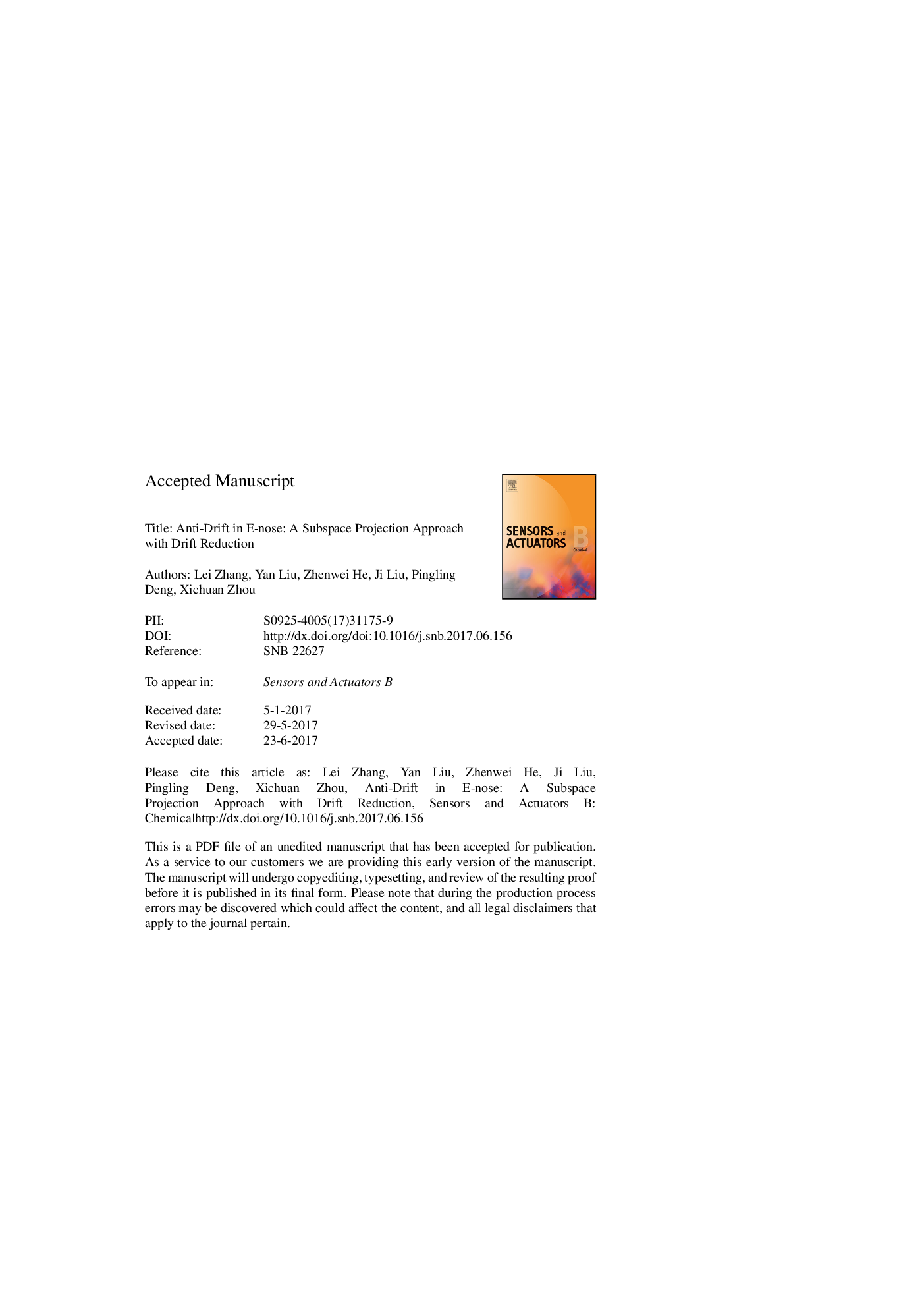| Article ID | Journal | Published Year | Pages | File Type |
|---|---|---|---|---|
| 5008987 | Sensors and Actuators B: Chemical | 2017 | 26 Pages |
Abstract
Anti-drift is an emergent and challenging issue in sensor-related subjects. In this paper, we propose to address the time-varying drift (e.g. electronic nose drift), which is sometimes an ill-posed problem due to its uncertainty and unpredictability. Considering that drift is with different probability distribution from the regular data, a machine learning based subspace projection approach is proposed. The main idea behind is that given two data clusters with different probability distribution, we tend to find a latent projection P (i.e. a group of basis), such that the newly projected subspace of the two clusters is with similar distribution. In other words, drift is automatically removed or reduced by projecting the data onto a new common subspace. The merits are threefold: 1) the proposed subspace projection is unsupervised; without using any data label information; 2) a simple but effective domain distance is proposed to represent the mean distribution discrepancy metric; 3) the proposed anti-drift method can be easily solved by Eigen decomposition; and anti-drift is manifested with a well solved projection matrix in real application. Experiments on synthetic data and real datasets demonstrate the effectiveness and efficiency of the proposed anti-drift method in comparison to state-of-the-art methods.
Related Topics
Physical Sciences and Engineering
Chemistry
Analytical Chemistry
Authors
Lei Zhang, Yan Liu, Zhenwei He, Ji Liu, Pingling Deng, Xichuan Zhou,
